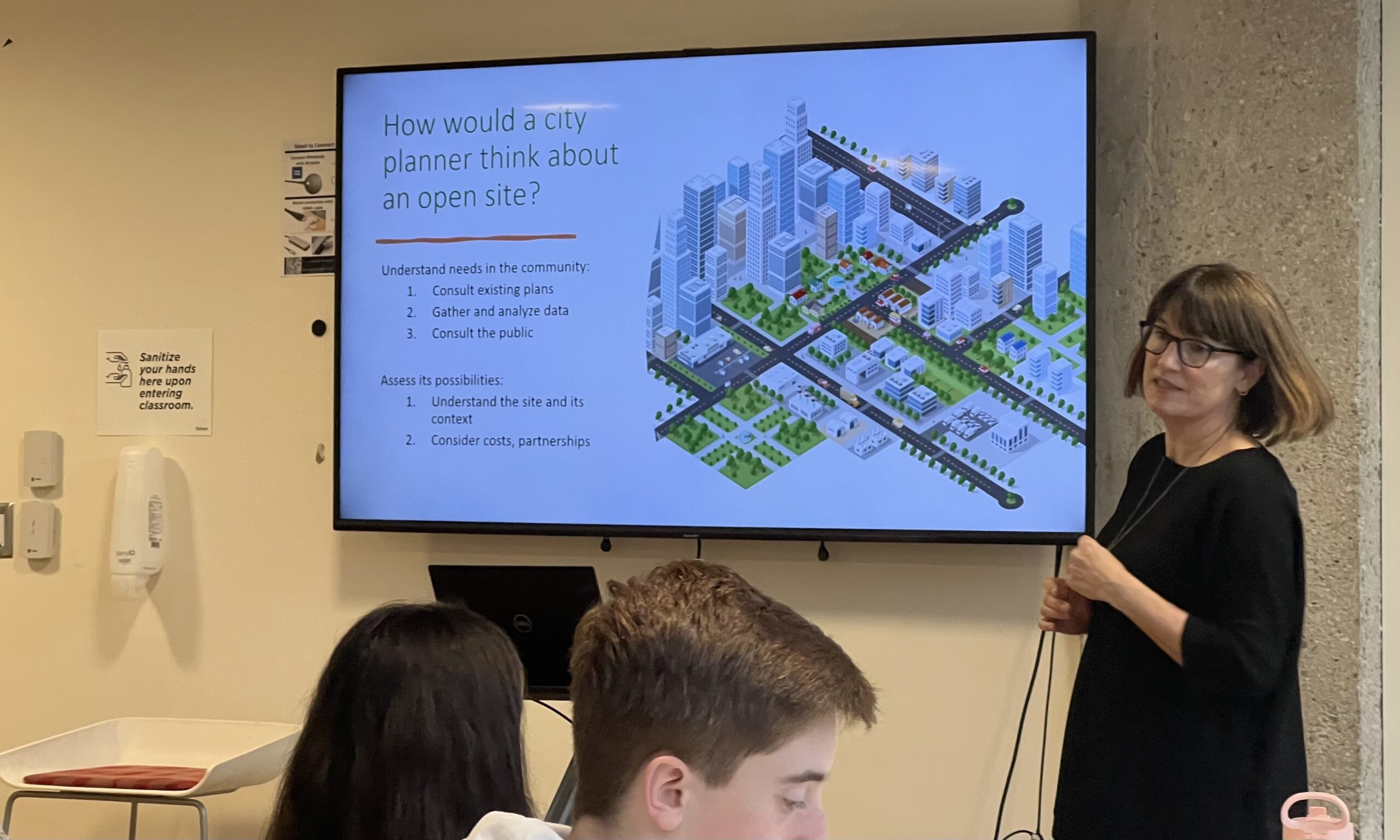Class: Integrated Math 2: Algebra, Geometry, and Data Science
Grade: 9
Teachers: Ms. Ching
How can a team of designers make better use of public space in a city? What do communities need and how can it be delivered to them through new buildings and programs? How can these ideas be packaged in a proposal to a city council? These are the questions Integrated Math 2 students are exploring in a project focused on designing public spaces.
To start the project, students were tasked with finding a vacant lot in a city with a high need for public buildings and resources. The challenge of the assignment was to determine how best to use that space in order to meet the needs of the surrounding neighborhood. Students could strategize on implementing housing, community centers, parks, or whatever else they see a need for in the surrounding area. By utilizing real-world data, students wrote proposals explaining what to do with their spaces, created top down drawings of how to organize the spaces, and created blueprints for the first floor of their imagined buildings.
An analytical and data-driven investigation into each chosen city ran parallel to the design elements of the assignment. Not only did students have to explain why they chose their city and neighborhood, they also had to address how their proposed building/program would fit into the socioeconomic fabric of the surrounding area. Predicting how the public space could impact the city over time and where funding will come from were also topics to explore.

To help contextualize the process of finding and designing a space, city planner (and Beaver parent!) Jennifer Molinsky spoke to students at the beginning of the project. Molinsky pointed to an open lot in Newton and shared real-world examples of how different organizations are making moves to build on the land. She also discussed the work of a city planner; “a city planner doesn’t make a decision, they help the city as a whole make a decision.” At the end of her presentation, students had the opportunity to share their work with Molinsky and get feedback.
At the end of the process, students presented their work. One group shared their vision for a teen center in Memphis, Tennessee, including their budget, required amenities, and how solar power will be utilized. Another student discussed their idea of a Farm Fresh supermarket in Philadelphia, Pennsylvania that would provide access to freshly grown food. Each presentation shed light on the specific needs of various cities throughout the United States and how they can be addressed.
More about this course: Integrated Math 2 students expand their algebraic reasoning and understanding of mathematical models including quadratic equations and exponential functions. Students also explore probability and build upon their knowledge of transformations, congruence, and similarity while developing logic skills through conjecture, argument, and proof. Investigations in this course build connections between all topics covered.